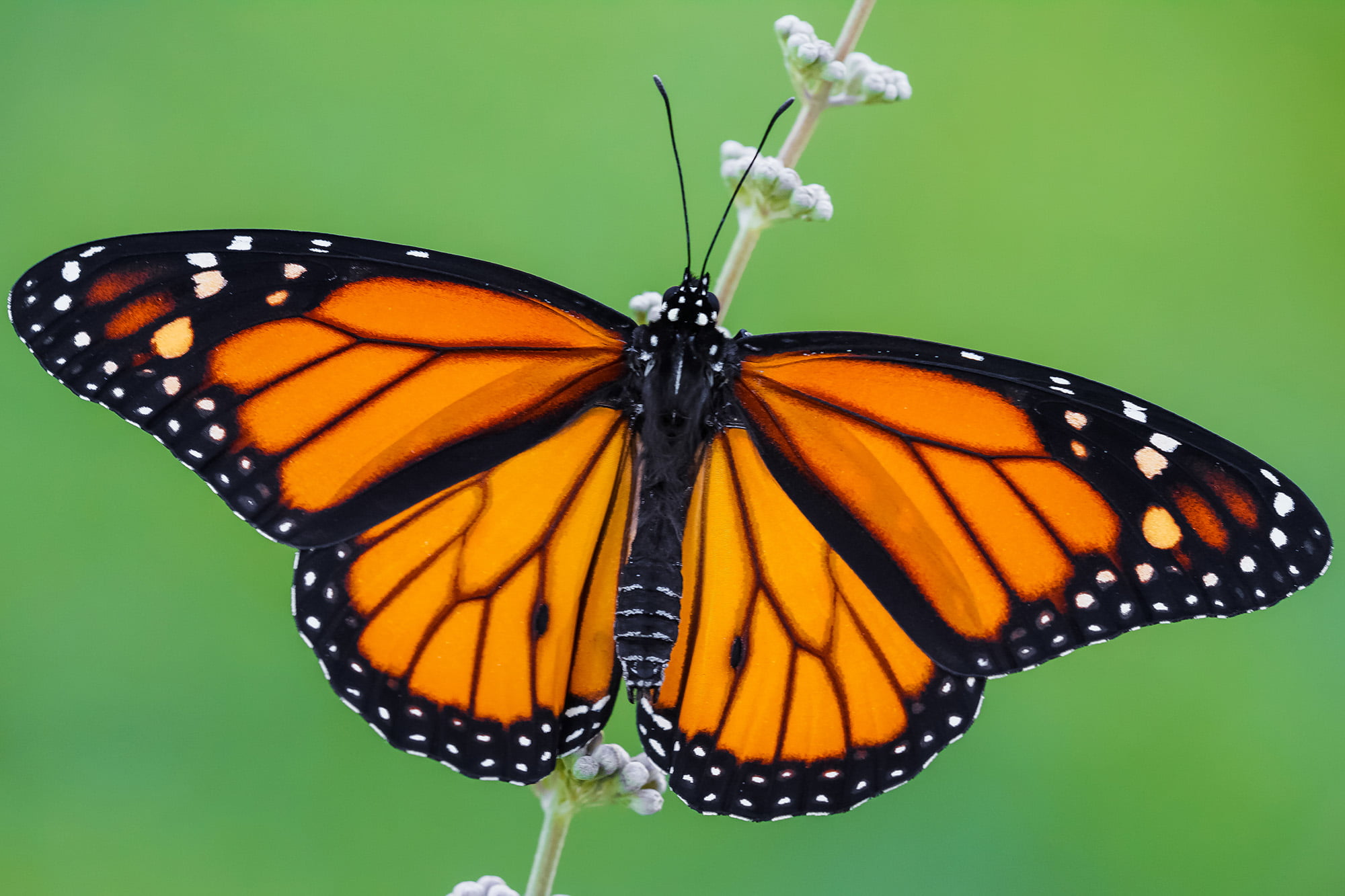Monarch butterflies, particularly the Eastern North American population, are facing significant challenges that have led to a decline in their numbers.
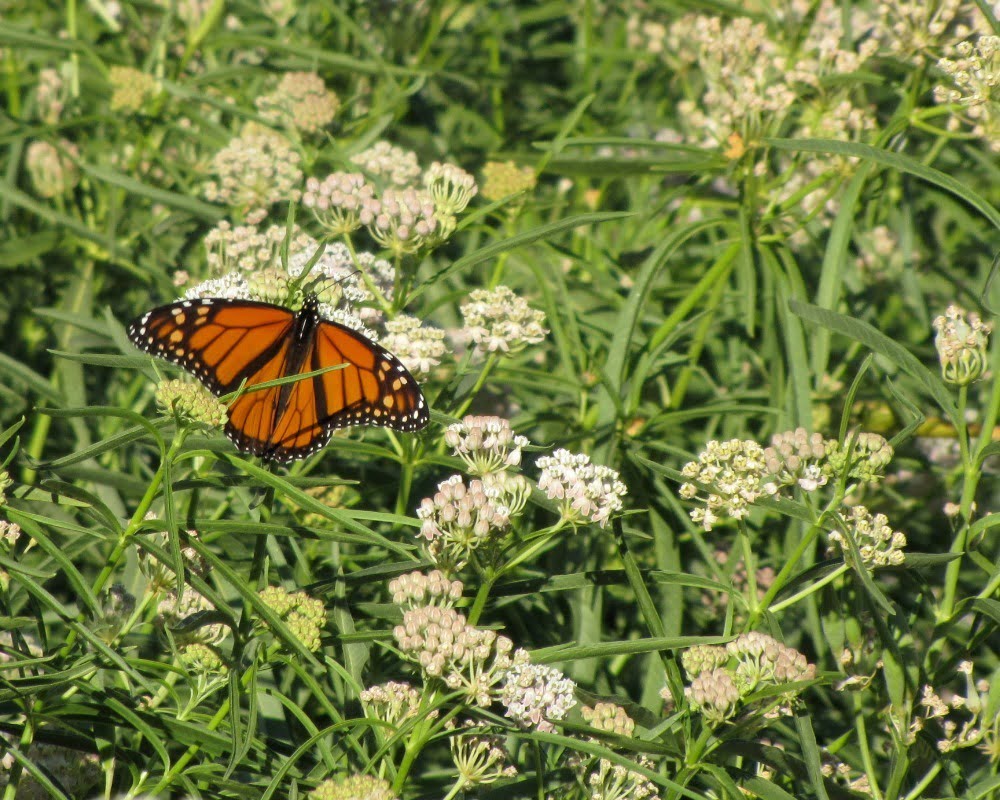
Here’s why Monarch butterflies are facing difficulties:
1. Loss of Milkweed Habitat:
- Agriculture: Widespread use of herbicides in agricultural fields has eradicated milkweed, the sole food source for Monarch caterpillars.
- Urban Development: Construction and development in urban and suburban areas have reduced the availability of milkweed.
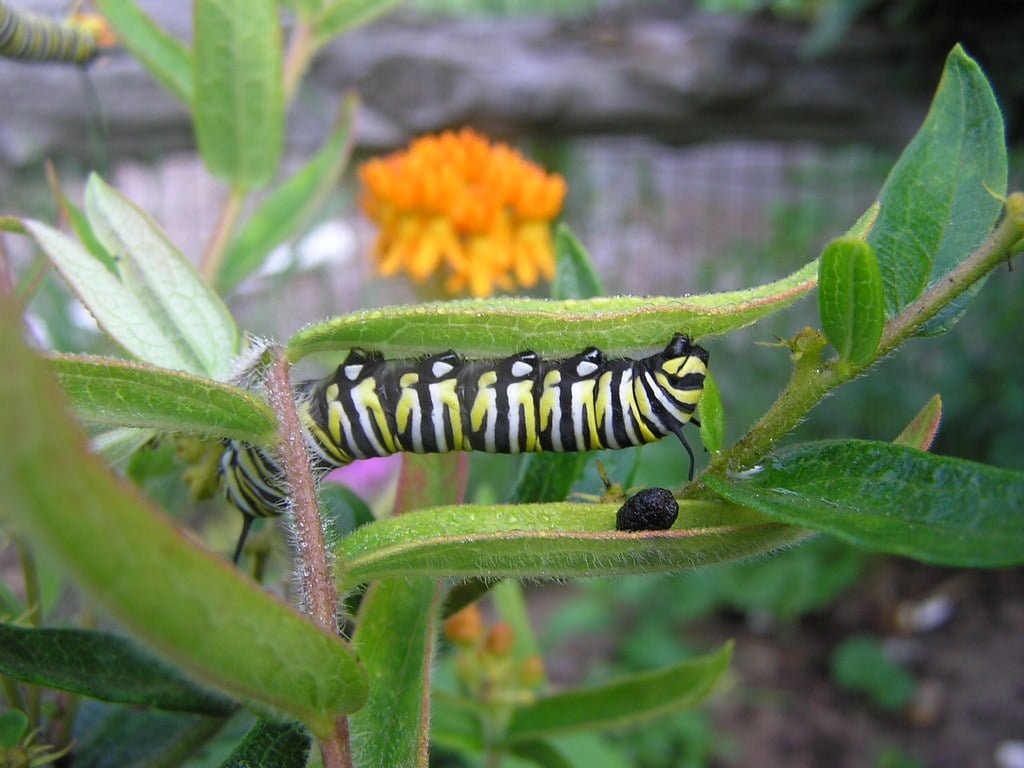
125 Butterfly Milkweed Seeds (Asclepias Tuberosa) for North America 2024 – Free Shipping
More than 600mg of Butterfly Milkweed Seeds (Asclepias tuberosa). Origin Kentucky. Free shipping.
2. Climate Change
- Weather Extremes: Unpredictable weather patterns and extreme conditions can disrupt the Monarch’s life cycle and migration patterns.
- Shift in Habitats: Climate change can lead to shifts in milkweed growth and nectar-producing flowers, affecting the Monarch’s ability to find food and reproduce.
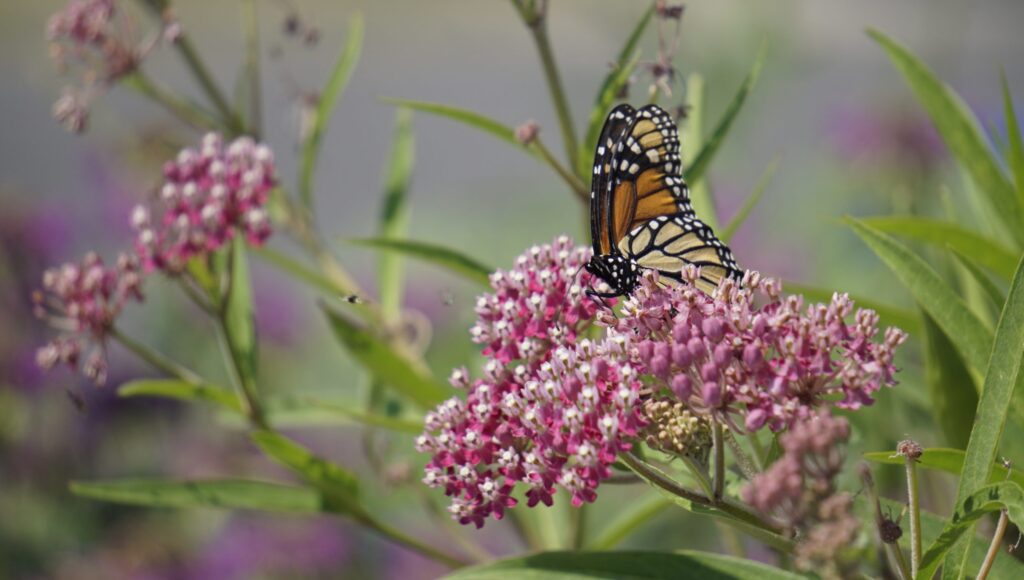
25 Florida-Native Swamp Milkweed Seeds (Asclepias Incarnata) for 2024 – Free Shipping
Our premium Asclepias Incarnata seeds, originating from our conservation land in Polk County Florida, provide an excellent opportunity to transform your outdoor space into a haven for the mesmerizing Milkweed Butterflies. These seeds offer an effortless way to cultivate a garden sanctuary that supports the life cycle of these delicate and fascinating creatures. These Swamp Milkweed seeds are recommended for USDA Hardiness Zone 9 and the rest of its native range. 25 seeds.
3. Deforestation in Overwintering Sites
- Logging in Mexico: Illegal logging in the Monarch’s overwintering sites in Mexico’s oyamel fir forests has reduced the area available for hibernation.
- Coastal Development in California: Coastal development threatens the Western Monarch’s overwintering sites along the California coast.
- Logging in Florida: Over a century ago, the Longleaf Pine forest, which may have served as a sanctuary for overwintering Monarchs, was clear-cut. Unfortunately, these forests were not replanted, leading to a permanent loss of vital habitat for these butterflies, along with hundreds of other creatures.

Milkweed Seed Subscription Kit (12 Months Total)
Monthly Milkweed Seed Kit includes multiple milkweed species, nectar and shelter plant seeds, fairy prints suitable for framing, and more!
4. Diseases and Parasites
- OE Parasite: The parasite Ophryocystis elektroscirrha (OE) can infect Monarchs, reducing their ability to survive and reproduce.
- Viruses and Other Pathogens: Various diseases can impact Monarch populations.
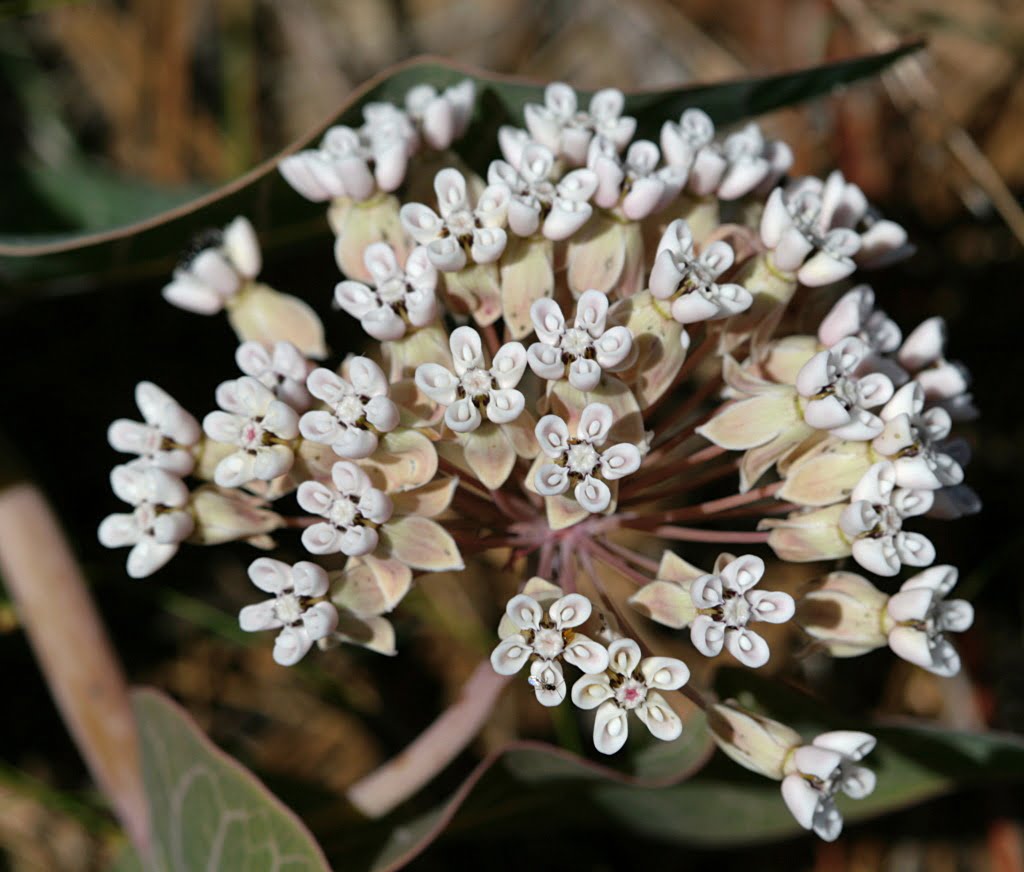
20 Florida-Native Sandhill Milkweed Seeds Ascslepias Humistrata Pinewood Milkweed – Free Shipping
With Johnny Butterflyseed’s Sandhill Milkweed seeds, you’re not just planting flowers; you’re cultivating a living mosaic of nature’s marvels. Florida Native. Free shipping.
5. Other Environmental Factors
- Pesticides: Exposure to pesticides can be lethal to Monarchs or interfere with their ability to navigate and reproduce.
- Lack of Wildflowers: Reduction in wildflower meadows diminishes nectar sources needed for migration.
6. Human Interference with Migration
Obstacles and Dangers: Urban environments, roads, and other human-made structures can present challenges and dangers during migration.

Conclusion
The decline of the Monarch butterfly is a complex issue with multiple interrelated factors. Conservation efforts focusing on habitat restoration, responsible agricultural practices, climate change mitigation, and legal protection of overwintering sites are crucial to reverse this trend. The Monarch’s plight is emblematic of broader environmental challenges and is a call to action for preserving biodiversity and ecological balance… one day at a time!
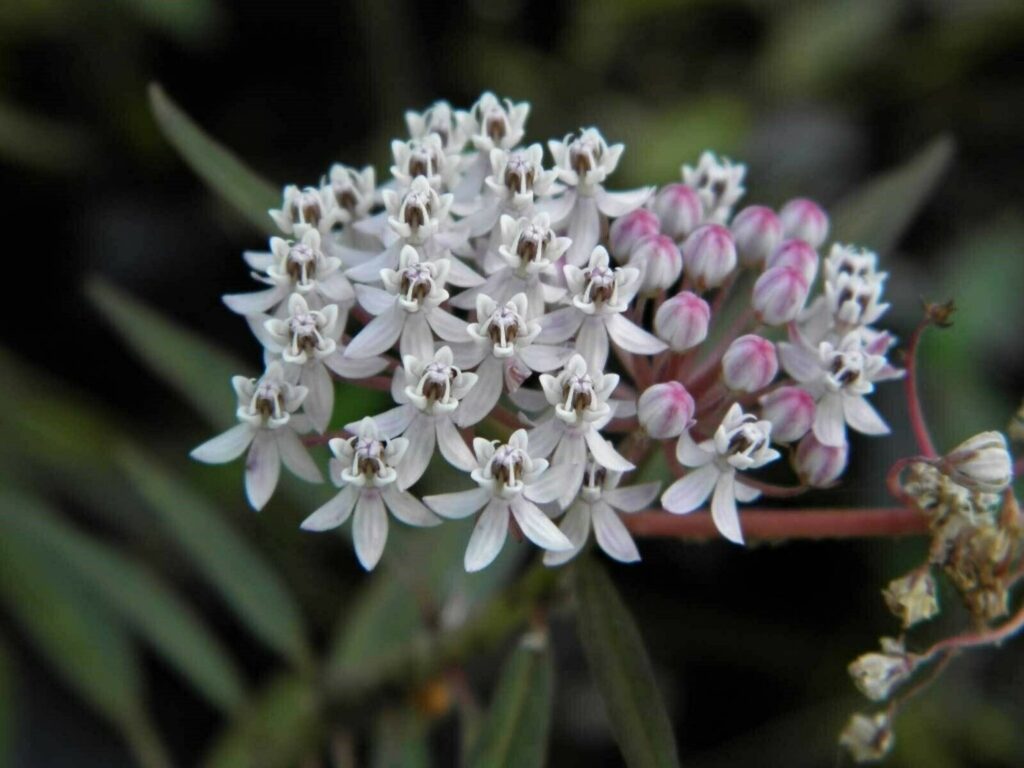
20 Florida-Native Aquatic Milkweed Seeds (Asclepias perennis) for U.S. Southeast – Free Shipping
Aquatic Milkweed (Asclepias perennis) is a native perennial that thrives in wet environments. With its beautiful white blossoms and attractive green foliage, it’s an eye-catching addition to any aquatic setting. Florida Native. 20 seeds. Free shipping.
